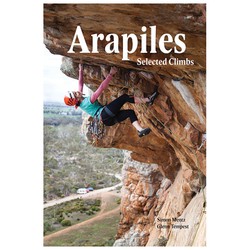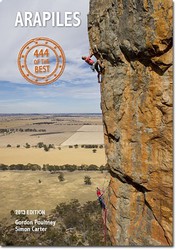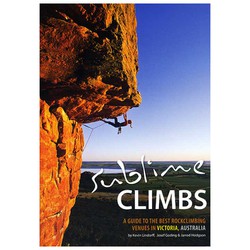Seasonality
Description
Access issues inherited from Arapiles
Cultural heritage closures now apply to some parts of Arapiles. This advice continues to evolve and may not be fully reflected in this website; refer to Parks Victoria for details applicable at the time of your visit. https://www.parks.vic.gov.au/-/media/project/pv/main/parks/documents/management-plans/mount-arapiles-tooan-state-park/mount-arapiles-tooan-state-park---aboriginal-cultural-heritage-protections---october-2020.pdf
Bird Nesting September-December Raptors usually nest on the following climbs in Spring : Cassandra, Eurydice, Harlequin Cracks, Revelations. Nesting usually finishes mid-December. There may or may not be signs in place at these times. Please keep 50m clear of these climbs if there appears to be nesting activity.
State Park - no dogs. No fires allowed Oct-Apr (inclusive).
Ethic inherited from Arapiles
Mount Arapiles is first and foremost a trad climbing area. The few sport climbs tend to be in the higher grades where no natural pro is available.
Bolting, particularly retro-bolting, is discouraged and should only be undertaken after extensive consultation with the local climbers, first ascensionists, etc. Inappropriately placed bolts have been chopped.
Do not chip the rock.
Look after the park.
Stick to the paths.
Don't disturb the wildlife.
Routes near peregrine falcon nesting sites are closed in the spring.
Minimise the impact of your camping (fuel stoves not fires, take your rubbish with you, etc).
Tags
Plan your Trip
Some content has been provided under license from: © Australian Climbing Association Queensland (Creative Commons, Attribution, Share-Alike 2.5 AU)
Hello!
First time here?
theCrag.com is a free guide for rock climbing areas all over the world, collaboratively edited by keen rock climbers, boulderers and other nice folks.You can log all your routes, connect and chat with other climbers and much more...» go exploring, » learn more or » ask us a questionSelected Guidebooks more Hide
Author(s): Simon Mentz, Glenn Tempest
Date: 2016
ISBN: 9780987526427
This selected yet in depth guide, in its third edition in 2016, is a must for first timers or regulars to the "Pines". By Simon Mentz and Glenn Tempest. It features 1200 routes over 23 different areas as well as bouldering, history info on flora and fauna, plus heaps more.
Author(s): Gordon Poultney, Simon Carter
Date: 2013
ISBN: 9780987087461
444 of the best routes on the best stone on earth? Yes Please! Who has time for all those other wondering pitches anyway when Gordon Poultney and Simon Carter have picked out the classics and printed it in a pocket size handy guide with string attachment. You'll take it on the multipitches, you'll take it to read in the toilets, you'll take it everywhere!
Author(s): Lindorff, Goding & Hodgson
Date: 2011
ISBN: 9780646529387
Get ready to fully experience the rock climbing scene in Victoria with Sublime Climbs, a comprehensive guidebook authored by Kevin Lindorff, Josef Goding, and Jarrod Hodgson. This full-color, 380-page book covers the best climbing locations in the region, including Mt Arapiles, Mt Buffalo, and the Grampians. It features descriptions of over 700 routes, topographic maps, and breathtaking images. Whether you're a seasoned pro or new to the sport, Sublime Climbs has everything you need to make the most of your climbing experience in Victoria and experience all of it's classic routes.
Accommodations nearby more Hide
Share this
Nearby Icons
| 12 | ★★ Panzer | ||
| 16 | ★★★ Watchtower Crack | ||
| 18 | ★★★ Skink | ||
| 21 R | ★★★ Auto Da Fe |
Photos Browse all photos

Susy G on ★★★ Watchtower Crack 16 - Susy @ crux of P4-2

Ben Salmon on ★★★ Brolga 16 R

★★★ Skink 18 - IMG-20240426-WA0008.jpg
Get a detailed insight with a timeline showing
- Ticks by climbers like you
- Discussions of the community
- Updates to the index by our users
- and many more things.
Login to see the timeline!




